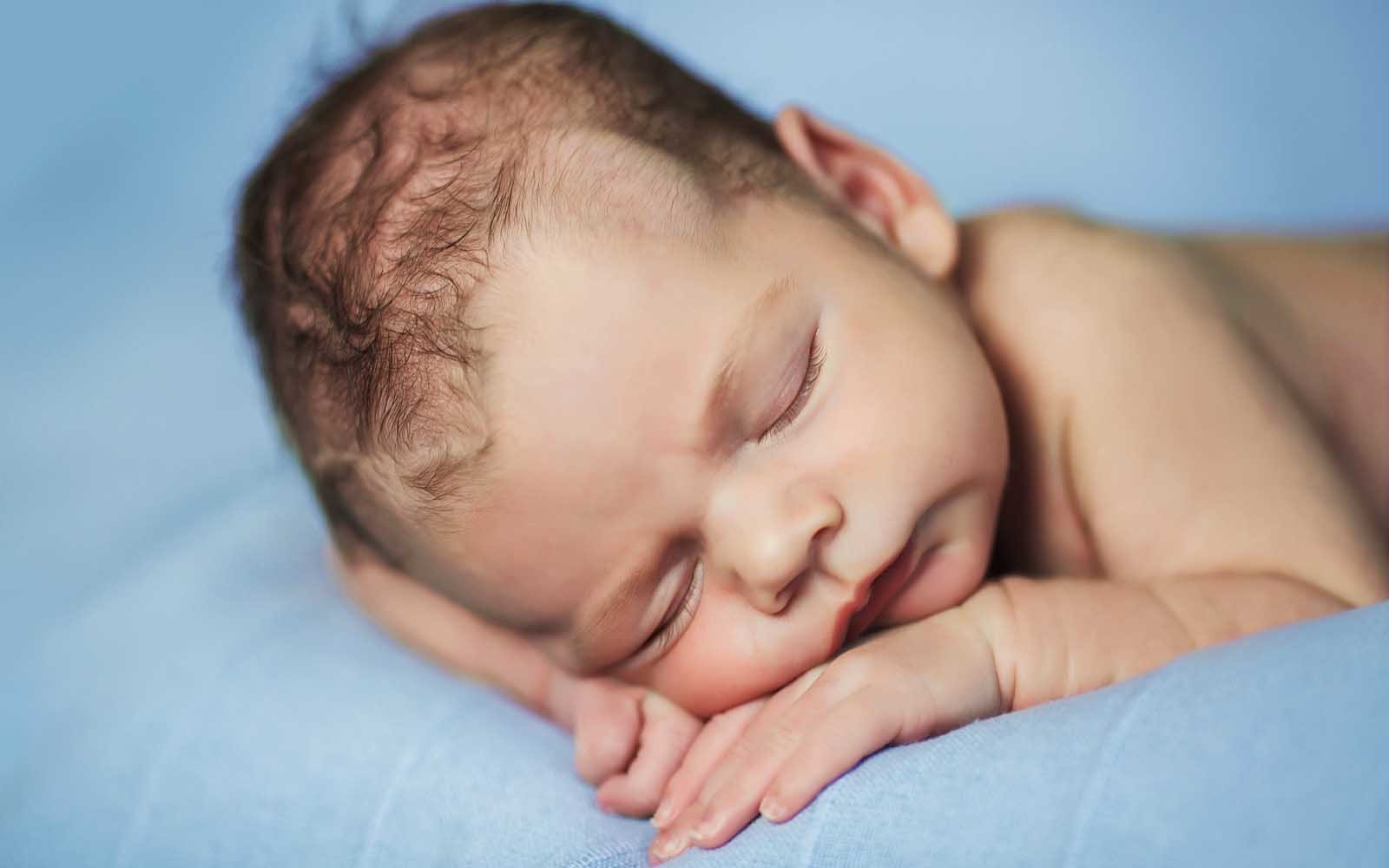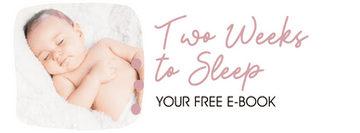
Sleeping like a baby: tips for easy settling and good sleep
Whoever coined the phrase "sleeping like a baby" clearly never actually met a baby. Sleep is something new (and not-so-new) parents struggle with and it can be tricky, not to mention exhausting, to work it all out!
To give your baby the best chance of sleeping well during the day and at night here are our best tips to create the ideal sleep conditions:
1. Make sure they're perfectly ready for sleep
2. Put your baby to sleep in a dark room
3. Play white noise
4. Swaddle your baby (for babies not rolling yet)
5. Use a sleeping bag or sleep sack (for babies who are rolling)
6. Introduce a cuddly/comforter when it safe to do so
7. Settle your baby in their bed
Read on to find out more!
If you want to take the guesswork out of knowing when your baby is perfectly ready for sleep then have a look at our comprehensive Little Ones App which gives you age appropriate awake windows and nap lengths.
Make sure they're perfectly ready for sleep:
This is the MOST important advice we can give you. Seriously. Baby sleep is a delicate balance between the right amount of day sleep to get through the day and the right amount of awake time between naps to avoid over or under tiredness (which can both result in poor naps and a lot of night waking). Your baby's sleep needs change very dramatically in the first couple of years of their life and it is important to stay on top of all the changes to have the smoothest sailing on the sleep sea. For example, if your baby is being put to bed too early, after not having the right amount of awake time for their age, they will be very difficult to settle, resist napping, or only nap for short periods each time. The same thing will happen if they're being put to bed after too much awake time! Like I said, it's a delicate balance and lucky for you our Little Ones App takes out all the guesswork! Once you have the awake times right, that's the biggest step in the right direction and your baby will be ready for sleep and sleep well when you put them down.
Yes, I want more sleep!
If you need a helping hand with tackling your baby’s sleep, then check out our Pediatrician-recommended App.
Choose your Sleep Solution
A dark room:
This can be done using blackout blinds or simply by putting a dark sheet or blanket under or over the existing curtains. Babies do not fear the dark, in fact, like most mammals, they actually find the dark comforting, calming and safe. No need for a nightlight and if you have anything in the room such as a monitor with a small light on it, you might think about covering it as the light can be very stimulating to babies, making it hard for them to settle or stay asleep for long periods. Think of it like if we have a bright alarm clock next to us in bed – if you can’t sleep for some reason that clock makes it much much worse.
Contrary to popular belief, it is not necessary to sleep babies in daylight during the day to avoid any kind of day/night confusion. Having your baby in a good nap pattern for their day and ensuring their naps are at the right time and the right length will naturally help your baby regulate their circadian rhythm. For babies older than 8 weeks, napping in anything other than a dark room can lead to catnapping in the day, which will then lead to overtiredness at bedtime as they need darkness to create melatonin, which will move them from one sleep cycle to another.
It also pays to remove anything from your baby’s sleep environment that is not completely conducive to sleep – excessive toys and musical mobiles are often a hindrance to a baby’s ability to settle. Why sleep when you have all these toys and stimulating things to look at?!
White noise:
This is a great tool for young babies but it also definitely helps older babies settle and sleep for longer. White noise works in a couple of ways: it replicates the loud whooshing sounds babies hear in the womb, sounds that can be louder than a vacuum cleaner in utero. Hearing white noise triggers the calming response in babies, letting them tune into the noise, especially if they are overtired, overstimulated or crying. White noise also disguises any sounds from the household which might startle or wake a sleeping baby. When babies reach around 4 months old and start waking between sleep cycles, their senses fully switch on. Having white noise playing means they are hearing the same comforting sound they heard when they fell asleep and they’ll find it easier to transition between sleep cycles.
Say goodbye to sleepless nights.
Join over 800,000 families worldwide who are enjoying excellent sleep with our Sleep Programs, created by experts in the field of pediatric sleep.
Choose your Sleep Solution
Experts recommend playing the white noise louder than the baby’s cries (if they are crying) or as loud as a shower to encourage good sleep, around 65 decibels. We have a variety of white noise tracks available here
Swaddling (for babies under 5 months or not rolling yet):
Using a swaddle for babies under 5 months old can certainly help your baby settle and sleep well. Swaddling replicates the tight, confined feeling of being in the womb and ensures babies can’t wake themselves up with their startle reflex. Sometimes people assume their baby doesn’t like being swaddled, mainly because their baby wiggles or cries while they’re being put in a swaddle, but more often than not, this is simply because the swaddle isn’t tight enough or the baby is already overtired or overstimulated. Most babies prefer to be swaddled.
By the time your baby reaches between 4-5 months they start to lose their startle reflex and you can begin to wean them off the swaddle and into a baby sleeping bag. Once your baby starts rolling it is time to move onto a baby sleeping bag to ensure their safety.
Baby sleeping bag/sleep sack (for babies over 5 months or rolling):
Using a baby sleeping bag can work as a cue for your baby that they are going down for a nap or for bedtime. It is a really good, positive sleep association to develop. Sleeping bags also help keep your baby at a regular temperature. Often babies wake in the night or early morning due to being too cold. We can sometimes misinterpret their waking for hunger or a settling issue and end up feeding or rocking or resettling our babies, which can in turn actually then create a waking habit (in babies older than 6 months). Using a baby sleeping bag can help make sure your baby stays nice and warm (and asleep!) all night long. We recommend sleeping bags that are made of natural fibres – cotton, wool, bamboo, merino – as these are much much safer for your baby and will mean they won’t overheat (a risk factor for SIDS). Avoid using polar fleece or polyester/synthetic sleeping bags as these are quite dangerous, with zero breathability or temperature-regulating properties. Having a room thermometer is good too, so you can make sure you are dressing your baby in the right clothing for their room temperature.
Cuddly/comforter:
Introduce a cuddly or comforter when it is safe to do so. Having a little buddy for sleep is a great tool to use as a baby-controlled sleep association. If they associate the comforter with bedtime and sleep, it will work as a strong signal to your baby when it is bedtime. Choose a comforter that is washable, preferably one that you can purchase two of (so you can interchange them when you need to wash one!). Keep the comforter close to you for a few days, in your bed, under your top or next to you and baby whilst feeding so it absorbs your scent. Then give it to your baby for every nap and at night-time. To begin with, this will just mean placing it in baby’s bed when they sleep until they are unswaddled and can hold the cuddly themselves. Make sure you never place objects close enough to your baby’s face that they can become a suffocation hazard.
Let's get your little one's sleep sorted ASAP!Our award-winning Sleep Programs will solve your baby's sleep challenges in no time. Take advantage of our new low prices while they last!
Choose your Sleep Solution
Settle your baby in their bed:
If your baby is good and ready for sleep (see the first point in this article), settling them in their bed is a great way to help your baby understand that their bed is where they fall asleep when they're tired and this will establish and lock in excellent sleep habits for months and years to come. We recommend using the side settling technique for babies younger than 4 months (see the video on how to do this HERE) and if your older baby still needs some help settling to sleep, using your voice or touch to soothe them while they're in their crib is our preferred method.
We hope these tips help with setting up your baby’s sleep sanctuary and encouraging your little ones to settle easily and sleep well. Our Little Ones App contains a lot more comprehensive advice about establishing natural and sustainable sleep patterns for your baby.
I had been struggling getting my baby to sleep, constant rocking, bouncing, feeding you name it at all hours of the day and night, all the while she’s screaming and crying. This went on for weeks and I was slowly breaking down little bit by little bit each day and found myself crying with her.
I had read the reviews on the little ones page and thought, this is worth the money if it helps us in anyway.
By day 2 of using the app my baby was putting herself to sleep within 3 minutes and very minimal tears. It’s been a few weeks now and she’s sleeping through the night 10-12 hours at 6 months. I can even get her down for the afternoon nap in the cot with just one re-settle in the room.
Since I’ve been using the app and seen such success, my other mum friends have also purchased and are seeing great results too.It’s such a good app, and you can alter it to suit your baby and lifestyle. The information provided is invaluable. And it’s the best money I have ever spent.
THANK YOU LITTLE ONES - Anna
--------------
Bibliography
Spencer, J A et al. “White noise and sleep induction.” Archives of disease in childhood vol. 65,1 (1990): 135-7. doi:10.1136/adc.65.1.135
Zisapel, Nava. “New perspectives on the role of melatonin in human sleep, circadian rhythms and their regulation.” British journal of pharmacology vol. 175,16 (2018): 3190-3199. doi:10.1111/bph.14116
Jhun, Iny et al. “Ambient Temperature and Sudden Infant Death Syndrome in the United States.” Epidemiology (Cambridge, Mass.) vol. 28,5 (2017): 728-734. doi:10.1097/EDE.0000000000000703
Colvin, Jeffrey D et al. “Sleep environment risks for younger and older infants.” Pediatrics vol. 134,2 (2014): e406-12. doi:10.1542/peds.2014-0401
van Sleuwen BE, "Swaddling: a systematic review."; Pediatrics. 2007 Oct;120(4):e1097-106.
___________

Receive product and services updates, promotional offers and other marketing communications based.





